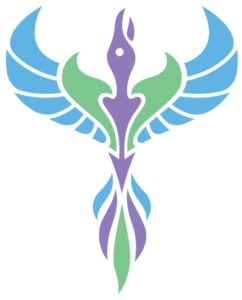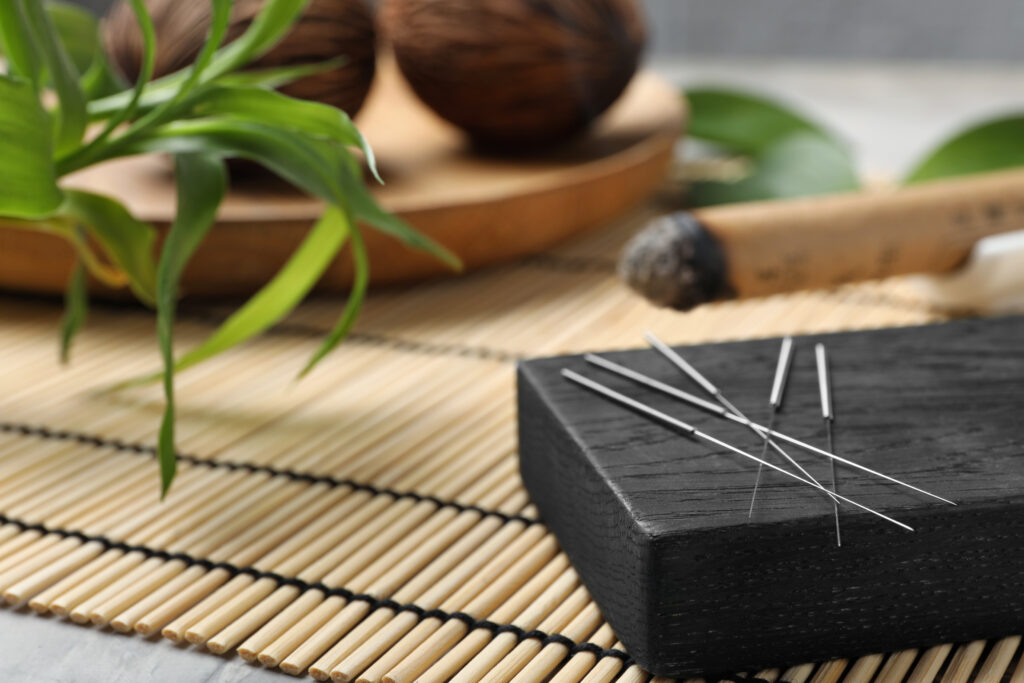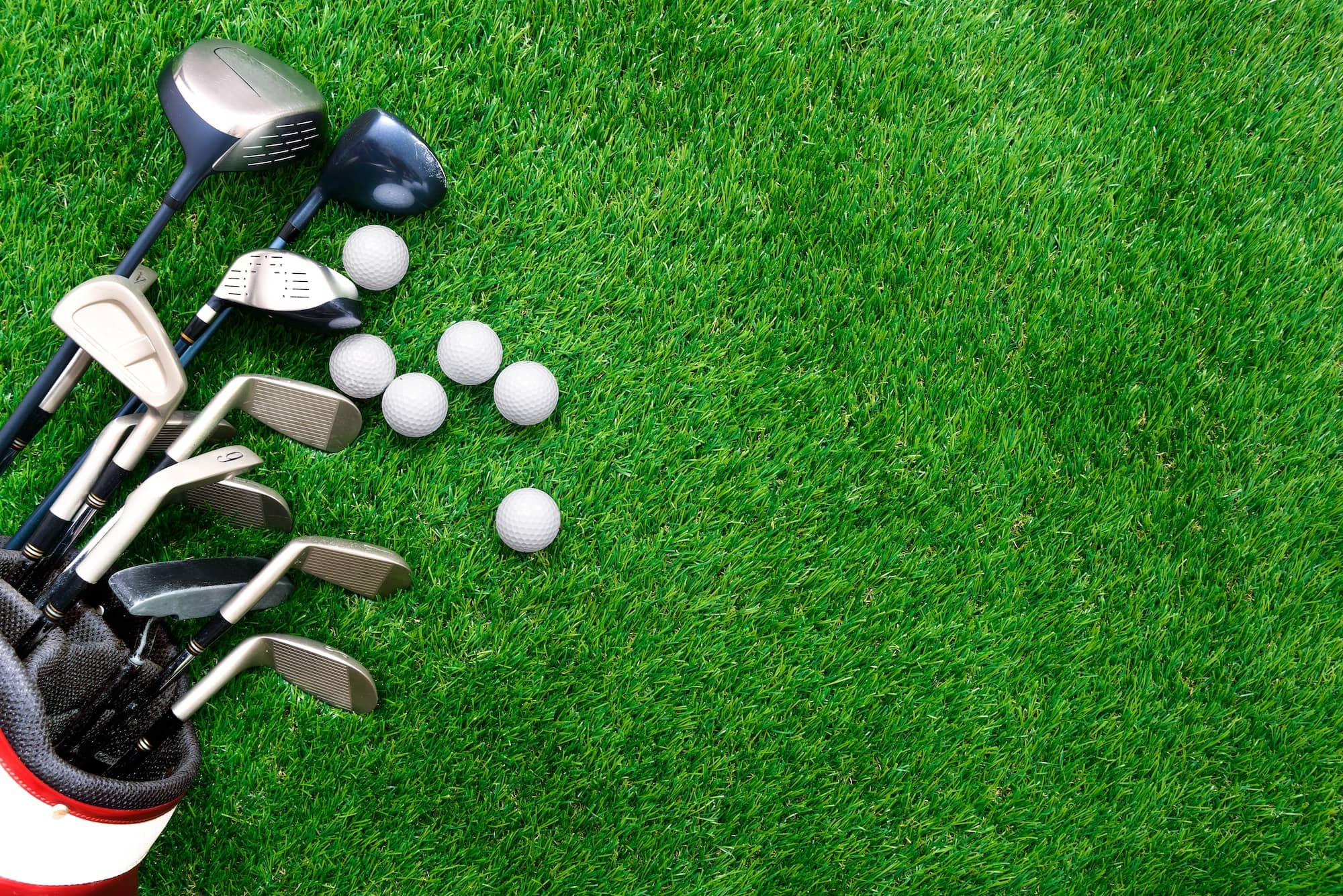Posts by Karen
Nutrition
Nutrition plays a pivotal role in maintaining optimal health and well-being, influencing various bodily functions and processes. Proper nutrition provides essential nutrients that support growth, repair tissues, boost immunity, and sustain overall vitality. However, many individuals struggle to achieve balanced nutrition due to busy lifestyles, dietary preferences, or misinformation. This is where chiropractic practitioners can significantly assist their patients in achieving better health outcomes through education, guidance, and personalized nutritional recommendations.
Chiropractic practitioners are well-positioned to address nutritional concerns as they typically have a holistic approach to healthcare, focusing on the body’s innate ability to heal itself when provided with the right conditions. They understand the intricate connections between the spine, nervous system, and overall health, recognizing that nutrition plays a fundamental role in maintaining spinal health and overall well-being.
One of the primary ways chiropractors can help is by educating patients about the importance of nutrition in supporting musculoskeletal health. Nutrient-rich foods such as fruits, vegetables, lean proteins, and healthy fats provide the building blocks necessary for strong bones, muscles, and connective tissues. By emphasizing the role of nutrition in preventing conditions like osteoporosis, arthritis, and muscle weakness, chiropractors empower patients to take proactive steps toward better health.
We can also assess patients’ dietary habits and provide personalized nutritional recommendations tailored to their specific needs and goals. Through detailed consultations and assessments, chiropractors can identify nutritional deficiencies, imbalances, or dietary patterns that may be contributing to musculoskeletal issues or other health problems. They can then develop individualized nutrition plans that focus on optimizing nutrient intake, improving dietary quality, and promoting overall wellness.
In addition to dietary recommendations, chiropractors may also incorporate nutritional supplements into their treatment plans to address specific health concerns or deficiencies. Supplements such as vitamins, minerals, and herbal extracts can complement a healthy diet and support the body’s natural healing processes. Chiropractors can guide patients in selecting high-quality supplements and advise them on proper dosages and usage to maximize effectiveness and safety.
Furthermore, chiropractic can enhance the body’s ability to absorb nutrients by optimizing spinal alignment and nervous system function. Misalignments in the spine, known as subluxations, can impede proper nerve signaling and disrupt the body’s ability to absorb and utilize nutrients efficiently. Through spinal adjustments and other chiropractic techniques, practitioners can restore proper alignment, alleviate nerve interference, and promote optimal nutrient absorption and utilization.
By integrating nutrition into their holistic approach to healthcare, chiropractors can empower patients to make informed choices that support their overall health and well-being. Through education, personalized guidance, and hands-on care, chiropractors play a vital role in helping individuals achieve and maintain optimal nutrition and vitality for a healthier life.
Click here to contact our office or call 718.398.3100
Weight Loss
Chiropractic care isn’t just about alleviating back pain—it can be a valuable asset in achieving weight loss goals as well. Through a holistic approach that focuses on spinal alignment and optimizing nerve function, chiropractors can support individuals in their quest for a healthier weight and overall well-being.
One of the key ways chiropractic care aids in weight loss is by addressing spinal misalignments, also known as subluxations. These misalignments can disrupt communication between the brain and the body, leading to various health issues, including difficulties in managing weight. By performing spinal adjustments, chiropractors help to realign the spine, restoring proper nerve function and promoting optimal bodily function.
Furthermore, chiropractors provide personalized guidance on lifestyle factors such as nutrition, exercise, and stress management. They understand that achieving and maintaining a healthy weight requires more than just occasional adjustments—it involves making sustainable lifestyle changes. By offering tailored recommendations, chiropractors empower individuals to make healthier choices and adopt habits that support their weight loss goals.
In addition to spinal adjustments, chiropractic care can address underlying issues that may be hindering weight loss progress. Chronic pain and inflammation, for example, can make it challenging to engage in physical activity and adhere to a weight loss plan. Through techniques such as massage therapy and corrective exercises, chiropractors can help alleviate pain and inflammation, making it easier for individuals to stay active and committed to their weight loss journey.
Regular visits to a chiropractor also provide accountability and support. Individuals can track their progress, discuss any challenges they may be facing, and receive encouragement from a healthcare professional who is dedicated to their success. This ongoing support can be instrumental in staying motivated and overcoming obstacles along the way.
It’s important to recognize that while chiropractic care can be beneficial, it is most effective when combined with other healthy habits. Eating a balanced diet, engaging in regular physical activity, getting enough sleep, and managing stress are all essential components of a successful weight loss plan. By integrating chiropractic care into a comprehensive approach to health and wellness, individuals can maximize their chances of achieving and maintaining their desired weight.
Click here to contact our Office or call (718) 398-3100
Stress
Chiropractic care offers a holistic approach to combating stress, providing relief that goes beyond merely addressing physical symptoms. By targeting the root causes of stress and tension, chiropractic adjustments promote overall well-being and resilience. Here’s how chiropractic care can help alleviate stress:
- Spinal Alignment: Chiropractic adjustments focus on aligning the spine, which can become misaligned due to poor posture, repetitive motions, or injury. When the spine is properly aligned, it allows for optimal nerve function. Misalignments can cause nerve interference, leading to increased muscle tension. By realigning the spine, chiropractors help restore proper nerve flow, reducing tension and promoting relaxation.
- Muscle Relaxation: Often manifesting itself as muscle tension, particularly in the neck, shoulders, and back. Chiropractic adjustments release tension in the muscles, promoting relaxation and alleviating discomfort. Through manual manipulation techniques, chiropractors target specific areas of tension, encouraging muscles to relax and loosen up.
- Improved Circulation: It can also restrict blood flow, leading to feelings of fatigue and exacerbating tension in the body. Chiropractic care enhances circulation by removing restrictions in the musculoskeletal system. Improved blood flow delivers oxygen and nutrients to tissues more efficiently, promoting healing and reducing the physical effects of stress.
- Stress Hormone Regulation: Chronic stress can dysregulate hormone levels in the body, leading to a cascade of physiological effects. Chiropractic adjustments have been shown to influence hormone balance, particularly cortisol levels. Cortisol, often referred to as the stress hormone, can contribute to feelings of anxiety and tension when elevated. Regular chiropractic care can help regulate cortisol levels, promoting a more balanced stress response.
- Enhanced Nervous System Function: The nervous system plays a crucial role in the body’s stress response. When the spine is misaligned, it can create interference in the nervous system, exacerbating stress and tension. Chiropractic adjustments remove this interference, allowing the nervous system to function optimally. By improving nervous system function, chiropractic care helps the body better cope with stressors and maintain a state of equilibrium.
- Promotion of Mind-Body Connection: Chiropractic care emphasizes the connection between physical health and mental well-being. By addressing physical imbalances and promoting alignment, chiropractors help facilitate a harmonious mind-body connection. This integration supports overall resilience to stress and enhances the body’s ability to adapt to life’s challenges.
Chiropractic care offers a comprehensive approach to the management of this problem by addressing physical, neurological, and hormonal factors. Through spinal adjustments, muscle relaxation techniques, and promotion of overall well-being, chiropractors provide valuable support in combating the effects of this concern. Click here to contact our office or call (718) 398-3100
Acupuncturists
In the realm of holistic healthcare, acupuncturists stand out as experts in facilitating natural healing processes. Through the strategic insertion of thin needles into specific points on the body, these skilled practitioners tap into ancient wisdom. Let’s delve into the world of acupuncturists, exploring their roles, benefits, and why they’re becoming increasingly sought after.
Acupuncturists play a pivotal role in guiding individuals toward optimal health by leveraging the principles of Traditional Chinese Medicine (TCM). With a deep understanding of meridians, Qi flow, and the interconnectedness of the body, acupuncturists offer personalized treatments. From alleviating chronic pain to addressing emotional imbalances, their holistic approach considers the individual as a whole, not just isolated symptoms.
One of the key benefits of seeking out an acupuncturist is their ability to provide drug-free pain relief. Whether it’s managing back pain, migraines, or arthritis, acupuncture has been shown to stimulate the release of endorphins, the body’s natural painkillers, while also reducing inflammation and improving blood circulation. This drug-free approach not only offers relief but also mitigates the risk of dependency on pharmaceuticals.
Furthermore, acupuncturists are adept at addressing underlying imbalances that contribute to various health issues. By conducting thorough assessments and understanding the unique constitution of each patient, they tailor treatments to target root causes rather than merely masking symptoms. This comprehensive approach not only fosters healing but also promotes long-term wellness and prevention.
In addition to physical ailments, acupuncturists excel in addressing mental and emotional well-being. Stress, anxiety, and depression are increasingly prevalent in today’s fast-paced world, and acupuncture offers a gentle yet effective means of restoring inner tranquility. By targeting specific acupuncture points linked to emotional centers, practitioners help rebalance the mind-body connection, promoting relaxation and mental clarity.
As awareness of holistic approaches to health continues to grow, so does the demand for skilled acupuncturists. Integrative healthcare settings, including hospitals and wellness centers, are increasingly recognizing the value of acupuncture as a complementary therapy alongside conventional treatments. This recognition not only expands career opportunities for acupuncturists but also validates the efficacy of their practice in the eyes of the public.
In conclusion, acupuncturists play a vital role in promoting holistic health and well-being through their expertise in Traditional Chinese Medicine. With their personalized approach, they offer drug-free pain relief, address underlying imbalances, and support mental-emotional harmony. As the demand for holistic healthcare grows, acupuncturists are poised to remain key players in the quest for optimal wellness.
Posture
Postural disorders, characterized by misalignments or abnormalities in the body’s posture, can have a significant impact on overall health and well-being. Addressing these issues is crucial, and chiropractors play a pivotal role in providing active solutions to alleviate discomfort and improve posture.
Chiropractors actively assess and treat postural disorders by employing a hands-on, proactive approach. Through a thorough examination, they identify imbalances, misalignments, and musculoskeletal issues that contribute to poor posture. This active diagnostic process enables chiropractors to tailor their interventions to the specific needs of each individual, recognizing that postural problems can vary widely among patients.
Chiropractors actively engage with their clients to educate them about the importance of proper posture. This involves not only addressing the immediate issues but also actively empowering individuals to actively participate in their own postural health. Through active communication and education, chiropractors guide their patients in understanding the detrimental effects of poor posture on the spine, joints, and overall well-being.
One active method employed by chiropractors to address postural disorders is spinal adjustments. Through precise and targeted manipulations, chiropractors actively correct misalignments in the spine, promoting optimal alignment and reducing strain on surrounding muscles and joints. This hands-on approach actively restores proper biomechanics, allowing the body to function more efficiently and reducing the likelihood of further postural issues.
Chiropractors also actively incorporate therapeutic exercises into their treatment plans. These exercises are designed to strengthen muscles, improve flexibility, and actively promote better posture. By actively engaging patients in therapeutic exercises, chiropractors empower them to actively participate in their recovery, fostering long-term improvements in postural alignment and overall musculoskeletal health.
In addition to hands-on interventions, chiropractors actively collaborate with patients to develop personalized plans for postural improvement. This may involve lifestyle modifications, ergonomic adjustments, and active strategies to incorporate better posture into daily activities. This collaborative approach emphasizes the active role that individuals play in maintaining and sustaining the benefits of chiropractic care for postural disorders.
Furthermore, chiropractors actively advocate for preventive measures to avoid future postural issues. Through ongoing consultations and active monitoring, they guide patients in making active lifestyle choices that support good posture and overall spinal health. This proactive approach aligns with the philosophy of chiropractic care, which emphasizes not only the resolution of existing issues but also the prevention of future problems through active patient engagement.
Our chiropractors actively address postural disorders through a comprehensive and hands-on approach. The Doctor’s active involvement in diagnosis, education, hands-on interventions, and collaborative planning empowers individuals to actively improve their posture and enhance their overall musculoskeletal health.
Contact us by clicking here or call (718) 398-3100
Golfer’s Health
The sport of golf and back health share a vital connection, as an effective swing relies on a back with optimal range of motion. Unfortunately, the swinging motion integral to golf often leads to strained muscles, misaligned vertebrae, and damaged ligaments for many individuals.
To proactively prevent injuries, consider implementing the following tips the next time you step onto the golf course:
- Warm-Up: Many people overlook the importance of simple stretches that take just five minutes but can spare your back from potential pain.
- Adjust Your Swing: If your swing causes significant pain, consider learning to shorten it to minimize torsion-related discomfort.
- Proper Bag Handling: Lift your golf bag correctly, and if you carry it, ensure it is adjusted to your back with weight evenly distributed across your shoulders.
- Strengthen Your Core: A strong core can provide essential support and stability, reducing the risk of back injuries during your golf game.
- Leave the Cart Behind: Opt for walking instead of using a cart, as walking strengthens connective tissues and improves circulation, benefiting your overall back health.
- Cool Down: Don’t forget to stretch at the end of your round to promote flexibility and prevent stiffness.
At our office, we specialize in helping individuals establish a healthy relationship between their spine and the golf course. If you’ve been sidelined from playing this summer, our team can assist you in identifying and addressing injuries. Through tailored healing and rehabilitation modalities, we aim to put you on the right path to recovery. Give our office a call to get back on the course with confidence.
Over-Training
In the realm of professional sports, where substantial funds and extensive research are invested, a flood of information and misinformation inundates those of us engaged in more personalized training. At our chiropractic office, we emphasize the importance of training intelligently rather than relentlessly.
The phenomenon of over training is akin to a syndrome. It contradicts our inherent instinct to cease exercising merely due to fatigue. After all, how can one enhance strength and endurance without pushing through moments of weakness or weariness? The natural human reward system craves more of a good thing, disregarding the principle of diminishing returns. Contrary to the belief that more work equals greater rewards, over training often results in the opposite.
Identifying signs of over training is crucial:
- Under performance
- Aches and pains
- Fatigue following a standard workout
- Changes in personality and mood
- Depression
- Loss of concentration
- Chronic fatigue
Moreover, the process of muscle-building hinges on a delicate balance between stress and rest. Muscles undergo microscopic tears during stress, and the repair process, leading to growth, occurs during rest. Achieving healthy muscle growth necessitates a state where muscle protein synthesis outweighs protein breakdown.
Many symptoms of over training can be linked to imbalances in the nervous system, and this is where our expertise comes into play at our office. If your body is enduring excessive physical stress and not enough rest, we can nurture the body back to health. A program of chiropractic adjustment, rest, taking a break from weights, pursuing light cardiovascular exercise, and proper attention to hydration and nutrition will have you feeling yourself again in no time.
We can help you get in touch with your body: call our office to schedule an appointment today
Muscle Building
Muscle building is all about efficiency: the process begins when motor neurons initiate communication with the muscle, telling it to contract. As a chiropractor, we are concerned with the nerve pathways; ensuring that your body can communicate fluidly without the interference of subluxated vertebrae is what we offer to the serious and casual muscle builders alike.
So, what is your personal fitness goal? Whether you are aiming to look like Arnold Schwarzenegger or simply to build supportive muscles, making your body strong and resistant, our office can help. We take stock of the physical condition of your spine and provide proper adjustments that allow your brain and muscles to communicate without interference.
Along the way, muscles can become strained: weight lifting at too high a tempo, with too much weight, or for too long without reprieve can result in muscle spasm, joint sprain, tissue damage, and other counterproductive injuries. We practice modalities that heal these injuries quicker and get you back to pursuing the muscle gain that you are after.
Give our office a call to get started.
Bounce Back After Holiday Feasts: A Guide to Overcoming Overindulgence with Chiropractic Care
Introduction:
The holiday season is synonymous with joy, family gatherings, and, of course, delicious feasts. However, it’s not uncommon to find ourselves overindulging in festive treats, leaving us feeling sluggish and uncomfortable. If you’ve overeaten during the holidays, fear not – there are effective ways to get back on track. In this guide, we’ll explore practical steps to recover from holiday excess, with a special emphasis on the benefits of chiropractic adjustments for overall well-being.
1. Hydration is Key:
After a day of indulging in rich holiday fare, one of the first steps to recovery is staying hydrated. Water helps flush out toxins, aids digestion, and can alleviate bloating. Aim to drink plenty of water throughout the day to support your body’s natural detoxification process.
2. Gentle Movement and Stretching:
Engage in light physical activity to stimulate digestion and relieve discomfort. Gentle walks, yoga, or stretching exercises can help ease bloating and promote a sense of well-being. These activities also support spinal health, an integral component of overall wellness.
3. Mindful Eating Going Forward:
As you recover, consider adopting mindful eating practices to prevent overindulgence in the future. Pay attention to hunger and fullness cues, savor each bite, and choose nutrient-dense foods. This mindful approach not only benefits your digestive system but also supports your overall health.
4. Chiropractic Adjustments for Digestive Harmony:
Chiropractic care can play a crucial role in post-holiday recovery. Misalignments in the spine may impact the function of the nervous system, including the nerves that control digestion. Gentle chiropractic adjustments can help restore spinal alignment, promoting optimal communication between the brain and the digestive system.
Benefits of Chiropractic Adjustments:
- Enhanced Nervous System Function: Chiropractic adjustments aim to optimize nervous system function, facilitating efficient communication between the brain and the digestive organs. This can lead to improved digestion and nutrient absorption.
- Alleviation of Discomfort: Overeating can lead to discomfort, particularly in the abdominal area. Chiropractic adjustments may help alleviate tension in the muscles surrounding the spine, providing relief from digestive discomfort.
- Support for Healthy Posture: Proper posture is essential for optimal digestion. Chiropractic care focuses on maintaining spinal alignment, contributing to better posture and reducing the likelihood of digestive issues.
5. Balanced Nutrition:
As you recover from overeating, focus on incorporating nutrient-rich foods into your meals. Choose fruits, vegetables, lean proteins, and whole grains to provide your body with the essential nutrients it needs to function optimally.
6. Prioritize Sleep:
Adequate sleep is crucial for overall health and recovery. Aim for 7-9 hours of quality sleep each night to support your body’s natural healing processes.
Conclusion:
Overindulging during the holidays happens to the best of us, but the key is to bounce back with a proactive approach to your well-being. Hydration, gentle movement, mindful eating, and chiropractic care can work together to support your body’s recovery. If you’re seeking holistic assistance in regaining balance, consider scheduling a chiropractic adjustment. Your spine plays a vital role in your overall health, and a well-aligned spine can contribute to a healthier, more comfortable post-holiday season. Embrace the opportunity to prioritize your health and well-being, and let chiropractic care be an integral part of your recovery journey.
Nourishing Your Body and Mind: The Importance of Healthy Eating and Chiropractic Care in Winter
Introduction:
As the winter chill sets in, it’s crucial to pay extra attention to our health and well-being. The colder months bring with them unique challenges that can impact our physical and mental health. One effective way to navigate this seasonal shift is by adopting a wholesome and nutritious diet, complemented by chiropractic care. In this article, we’ll explore the symbiotic relationship between winter nutrition and chiropractic adjustments, shedding light on why they are essential for maintaining overall health during the colder months.
The Winter Wellness Connection:
1. **Boosting Immunity:**
Winter is synonymous with the flu season, making it essential to fortify our immune systems. A diet rich in vitamins, minerals, and antioxidants provides the necessary nutrients to fend off seasonal illnesses. Incorporating fruits, vegetables, and whole grains into your meals can significantly contribute to a robust immune response.
Chiropractic adjustments have also been linked to immune system support. Research suggests that spinal adjustments may enhance the function of the immune system by reducing stress on the nervous system. As a result, a well-aligned spine may contribute to better overall health and resilience against infections.
2. **Combatting Seasonal Fatigue:**
The shorter days and longer nights characteristic of winter can lead to feelings of fatigue and lethargy. Proper nutrition plays a pivotal role in sustaining energy levels. Complex carbohydrates, lean proteins, and healthy fats are essential for maintaining a steady release of energy throughout the day.
Chiropractic care can complement these efforts by improving spinal alignment. Misalignments in the spine can contribute to fatigue and discomfort. Regular adjustments may help alleviate tension, allowing the body to function optimally and reducing feelings of exhaustion.
3. **Winter Mood Elevation:**
Seasonal Affective Disorder (SAD) is a type of depression that occurs seasonally, often in the winter months. Nutrition can play a role in mood regulation, with certain foods promoting the production of serotonin, the “feel-good” neurotransmitter. Omega-3 fatty acids found in fish, flaxseeds, and walnuts, for example, have been linked to improved mood.
Chiropractic adjustments may also positively impact mental health. The spine’s connection to the nervous system means that misalignments can affect neurotransmitter function. By promoting proper alignment, chiropractic care may contribute to a more balanced and positive mental state.
Chiropractic Adjustments: A Key Element in Winter Wellness:
Chiropractic care focuses on maintaining the integrity of the nervous system by addressing misalignments in the spine. This holistic approach aligns seamlessly with the goal of achieving overall health, especially during the winter months. Here’s how chiropractic adjustments can enhance your winter wellness:
1. **Pain Relief:**
Cold weather can exacerbate joint and muscle pain. Chiropractic adjustments target misalignments that may be contributing to pain, offering relief and promoting a greater range of motion.
2. **Improved Circulation:**
Winter often brings with it decreased physical activity, leading to stagnation in the circulatory system. Chiropractic adjustments can enhance blood flow, ensuring that vital nutrients reach all parts of the body efficiently.
3. **Enhanced Respiratory Function:**
Proper spinal alignment can positively impact respiratory function. This is particularly relevant during winter when respiratory infections are more prevalent. Chiropractic care may help maintain optimal respiratory health.
Conclusion:
Incorporating a healthy diet and chiropractic care into your winter routine can be transformative for your overall well-being. By nourishing your body with the right foods and ensuring that your spine is properly aligned, you set the stage for a healthier, more resilient winter season. Take the proactive steps necessary to care for your body and mind, and embrace the winter months with vitality and strength. Your chiropractor is your ally in this journey, providing the expertise and guidance needed to navigate the winter wellness landscape.










